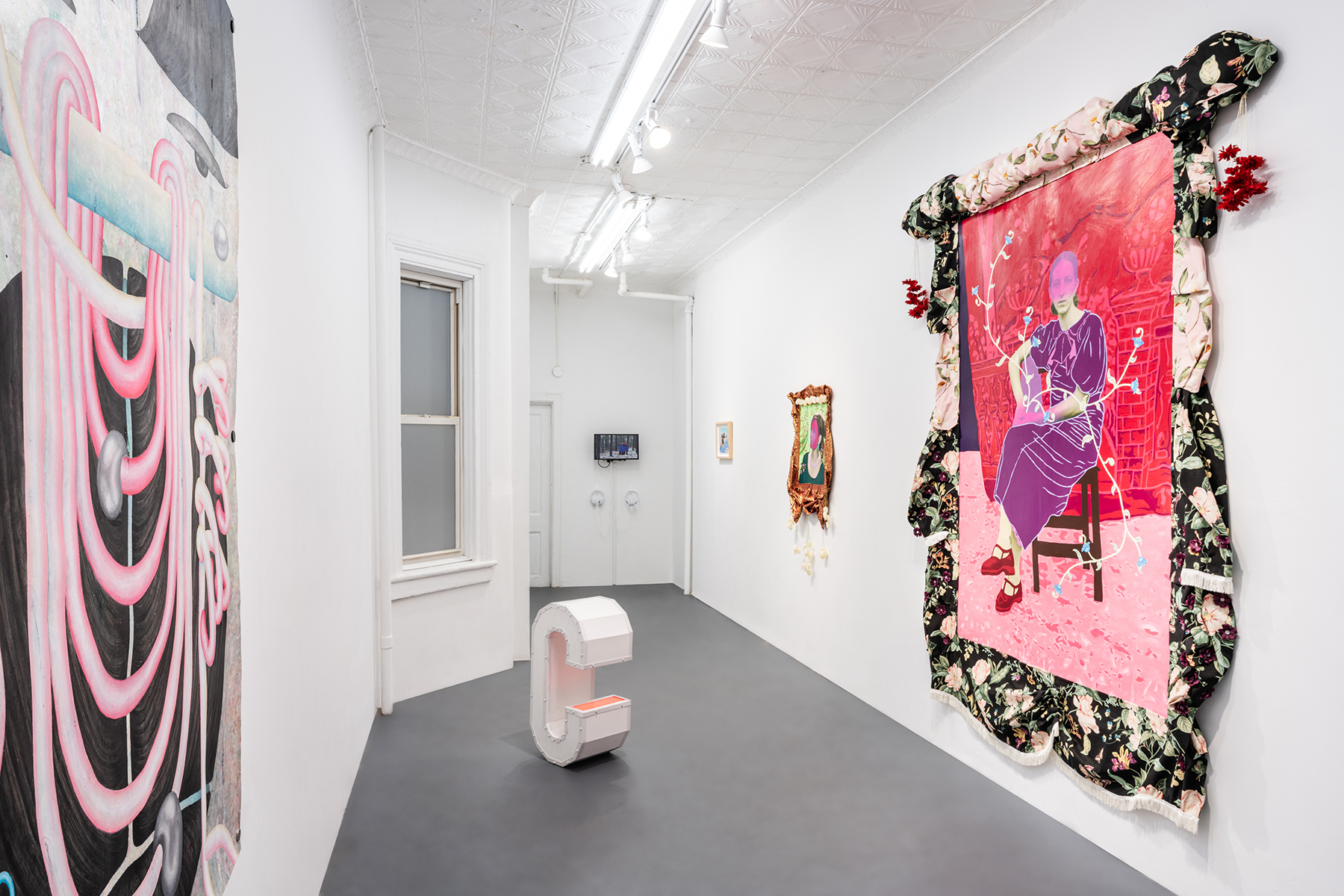Inherited Labor
Curated by Emireth Herrera Valdes

Inherited Labor
Curated by Emireth Herrera Valdes
The Border Gallery + Ghostmachine
October 4-October 25, 2025
The Border Gallery is proud to present Inherited Labor at GHOSTMACHINE GALLERY, a group exhibition curated by Emireth Herrera Valdés that continues her series exploring immigrant labor, this time focusing on reproductive work. Anthropologists Michael Hardt (1999) and Stefanie Muehlebach (2011) describe reproductive work as a form of affective labor that generates emotions such as love, care, and happiness, while also creating value and enabling workers to navigate—and resist—exploitative relations under advanced capitalism. Featuring the work of five artists: Daisy Patton, Jen Liu, Gabino A. Castelán, Anna Fabricius, and Zac Hacmon, the exhibition examines reproductive labor as a form of labor passed down through generations, not only as a means of survival but also as a way of preserving culture, care, and family bonds. Through repetitive gestures, learned patterns, daily routines, and rituals, this form of labor transmits knowledge, skills, and values that sustain both individuals and communities.
Daisy Patton reflects on memory and inheritance through layered paintings that combine archival photographs with organic ornamentation. Growing up watching her mother sew, embroider, knit, and garden, Patton developed her unique language rooted in her ancestors. Her exploration of her father’s Iranian heritage encouraged her engagement with archives, especially with the objects she lacks from her father, family photographs. In Untitled (Seated Pink Woman with Red Painted Backdrop) (2024), the floral fabric frame evokes both her maternal and paternal influences through sewing and ornamentation akin to Persian miniature paintings, while red shoes emphasize the sitter’s individuality. From the sitter’s hands sprout delicate blue branches and blossoms, symbols of cultural rootedness and continuity.
Jen Liu investigates how erased histories persist as haunting presences in the present. Hello Hello Hung Out To Dry (2025), from her ongoing project MERCURY, examines the lives of nineteenth-century Chinese sex workers in the Americas and the resonances of their exploitation with today’s digital gig economy. Blending narrative, performance, AI-generated imagery, and alchemical motifs, Liu employs mercury as a metaphor for memory loss, bodily dissociation, and fluid identity. The portrait of a woman, with black hair silvered by mercury, eyes half-open, and facial features formed by hanging organic shapes—suggests a fragmented body. To the right, a delicate, elongated hand underscores fluidity while alluding to the fragility of undervalued reproductive and sexual labor.
Gabino A. Castelán’s works on paper depict laboring bodies within fragmented dreamscapes shaped by memory, desire, and dissonance. In Approaching Thunderstorm (2021), an elderly man exits the frame, children appear faintly sketched on a wall, and a dog rests at the center, anchoring the domestic scene. Surreal landscapes visible through windows suggest portals of longing and escape beyond household boundaries. In The Sweeper and Fruit Vendor Meeting the Ghost of Berta Cáceres…Her Ghost is Staring at Us (2021), Castelán invokes the murdered Honduran environmental activist through Nahuatl mythology, nineteenth-century pictorial traditions, and the artist’s own archives, merges political witness with mythic time: a snippet of sunset sky, flowers blooming around the goddess Cōātlīcue, and spectral presences. Across these works, figures move through metamorphic journeys where human potential collides with histories of labor and exploitation. By juxtaposing rest, love, and leisure with resistance and struggle, Castelán affirms the right to live in complexity and community.
Zac Hacmon, in collaboration with Miki, presents Miki (2025), a sound sculpture giving voice to a lifelong housekeeper from Durango, Mexico. Now in her eighties and still working for the same family in Los Angeles, the sculpture emits Miki singing El Corrido de Durango, composed by Graciela Olmos, a lullaby her grandfather once sang to her father—a layered echo of heritage and pride. This song links her personal memories with the revolutionary history of Pancho Villa’s era. Emerging from the gallery wall, this site-specific sculpture evokes Miki’s dual identity as both housekeeper and mother. Through spatial and sonic intervention, Hacmon highlights care work as a force that carries legacy and perpetuates generational patterns.
Anna Fabricius presents the intergenerational transmission of industrial labor through generation and as a collective experience. In Erika, Cable Assembler (2013), a worker compresses an eight-hour routine into a ten-minute performance, revealing the discipline and implicit knowledge inscribed in repetitive tasks. In IMMATERIAL (2017), Fabricius presents empty factory floors as choreographed spaces with empathy and dignity. In Experience Engrosses the Memory (2017), former textile workers in Łódź, Poland reconstruct not only technical practices but also the social and emotional fabric of factory life—the rhythms, gestures, and collective memory that shaped identity and expectation across generations.
Inherited Labor pays tribute to transgenerational labor that sustains immigrant families, communities, and societies at large. Through the featured works, reproductive labor emerges as a force of creativity, persistence, resistance, memory, and transformation. This exhibition illuminates how these forms of labor—whether in private or public spaces, industrial settings, urban environments, or archives—carry legacy and appreciation for those who eternalize it.
©2025 by GHOSTMACHINE Gallery | 23 Monroe St, New York, NY 10002 | info@ghostmachinegallery.com